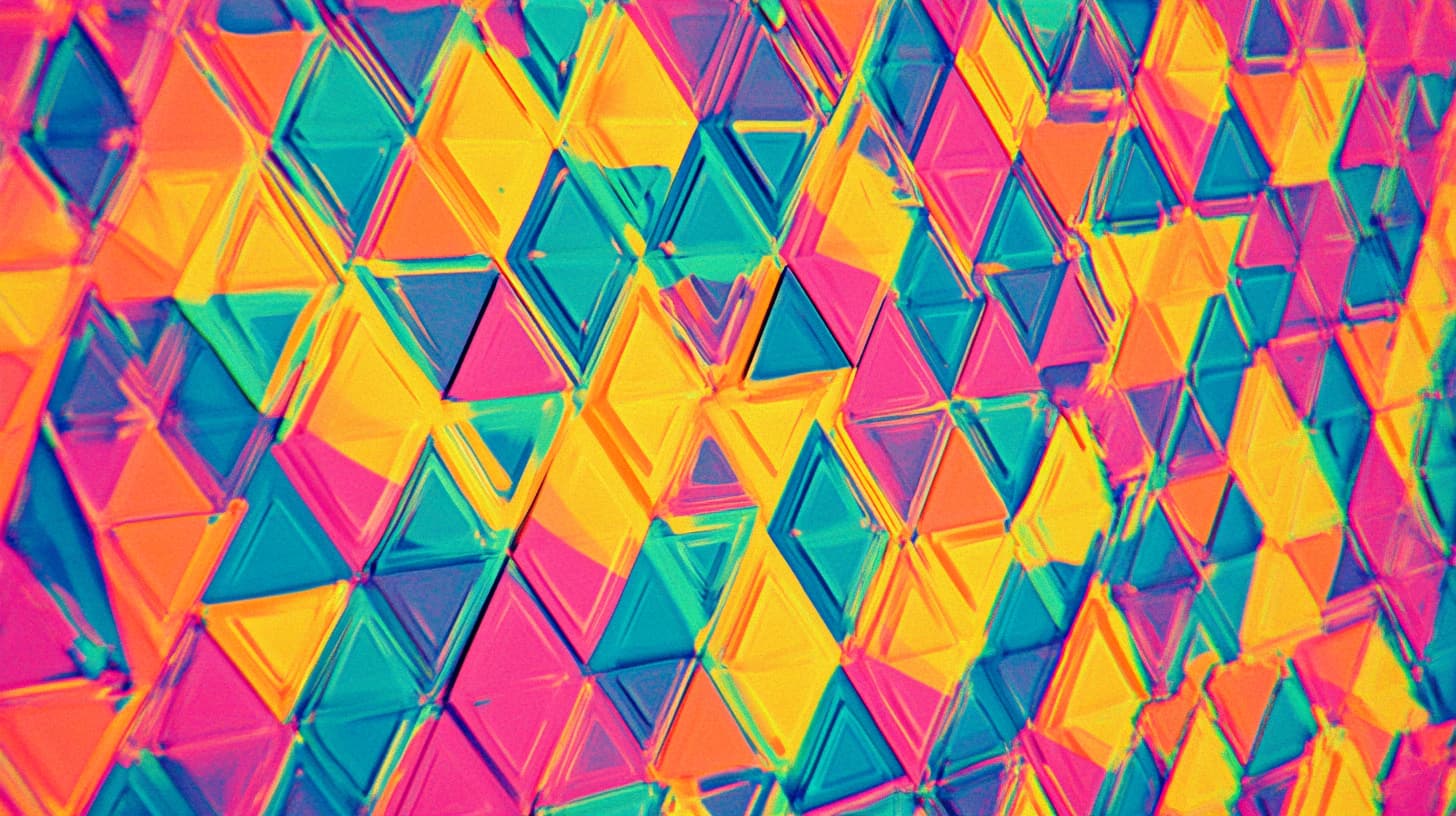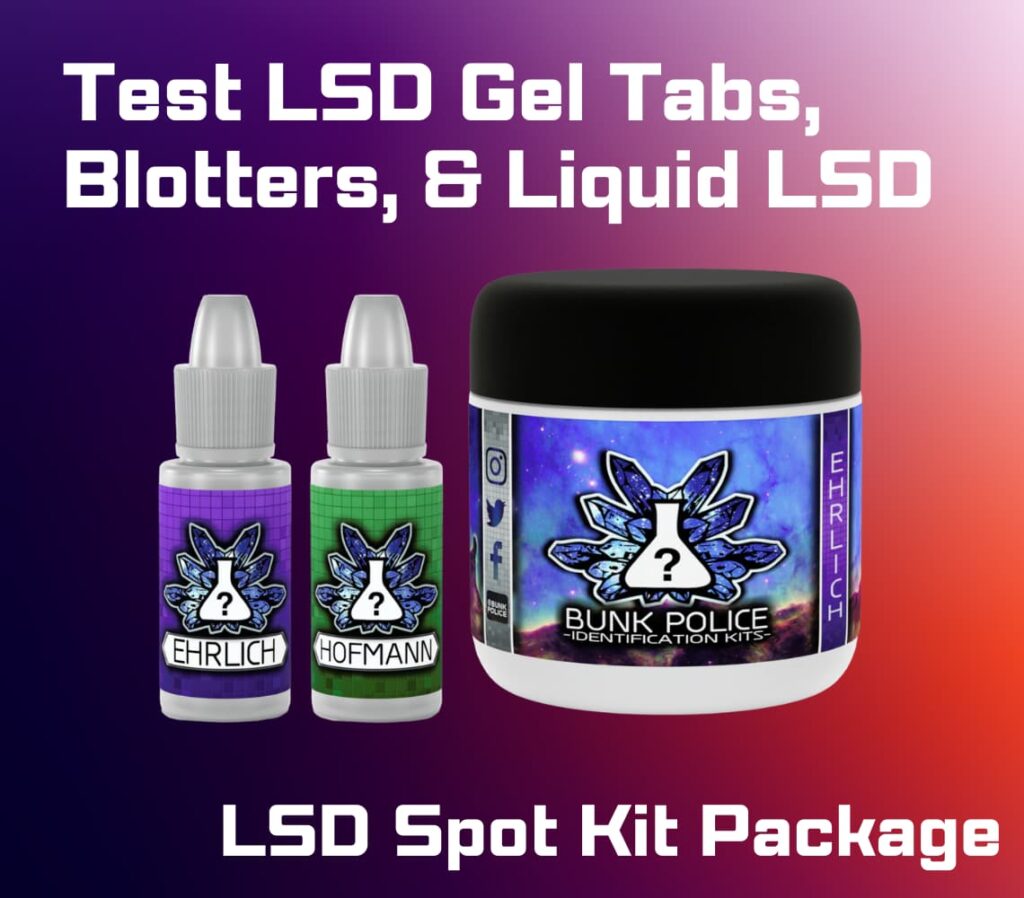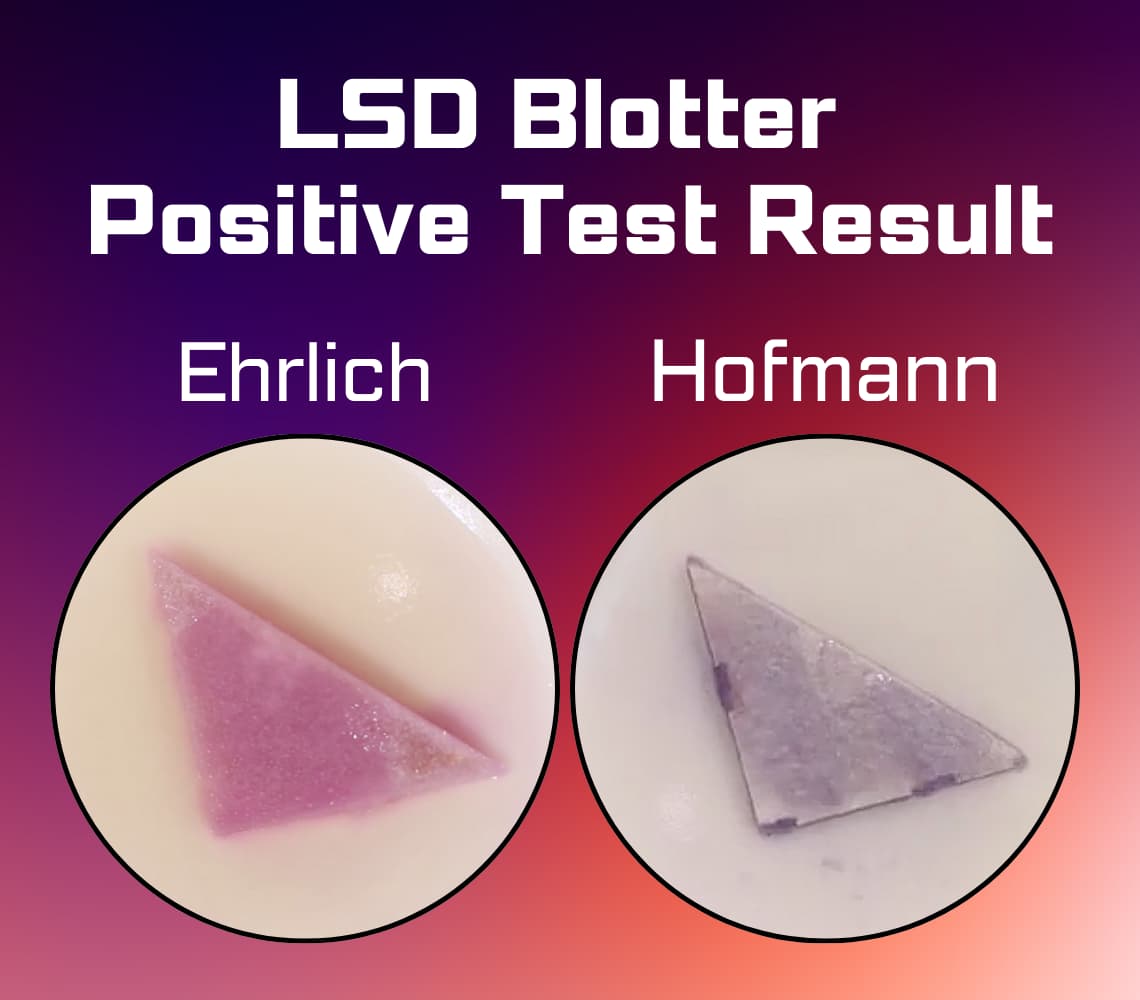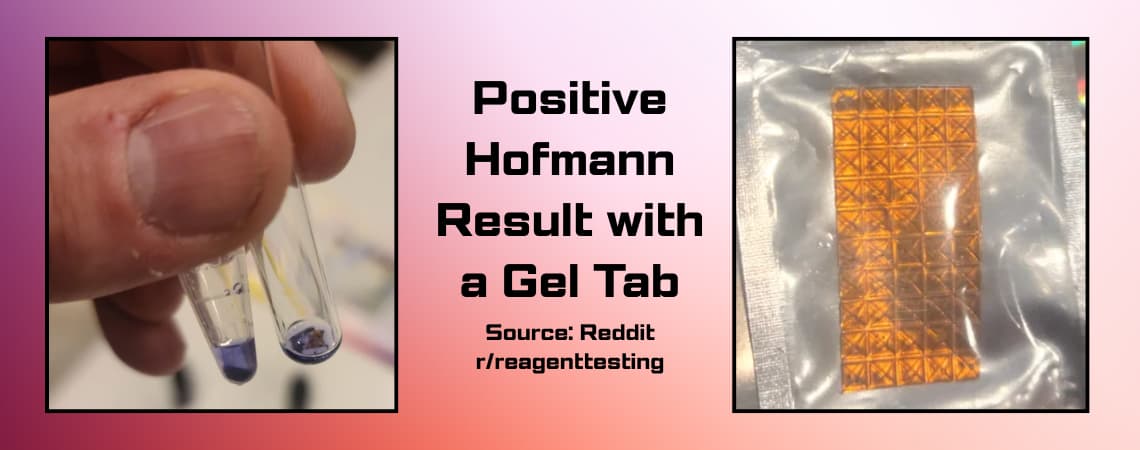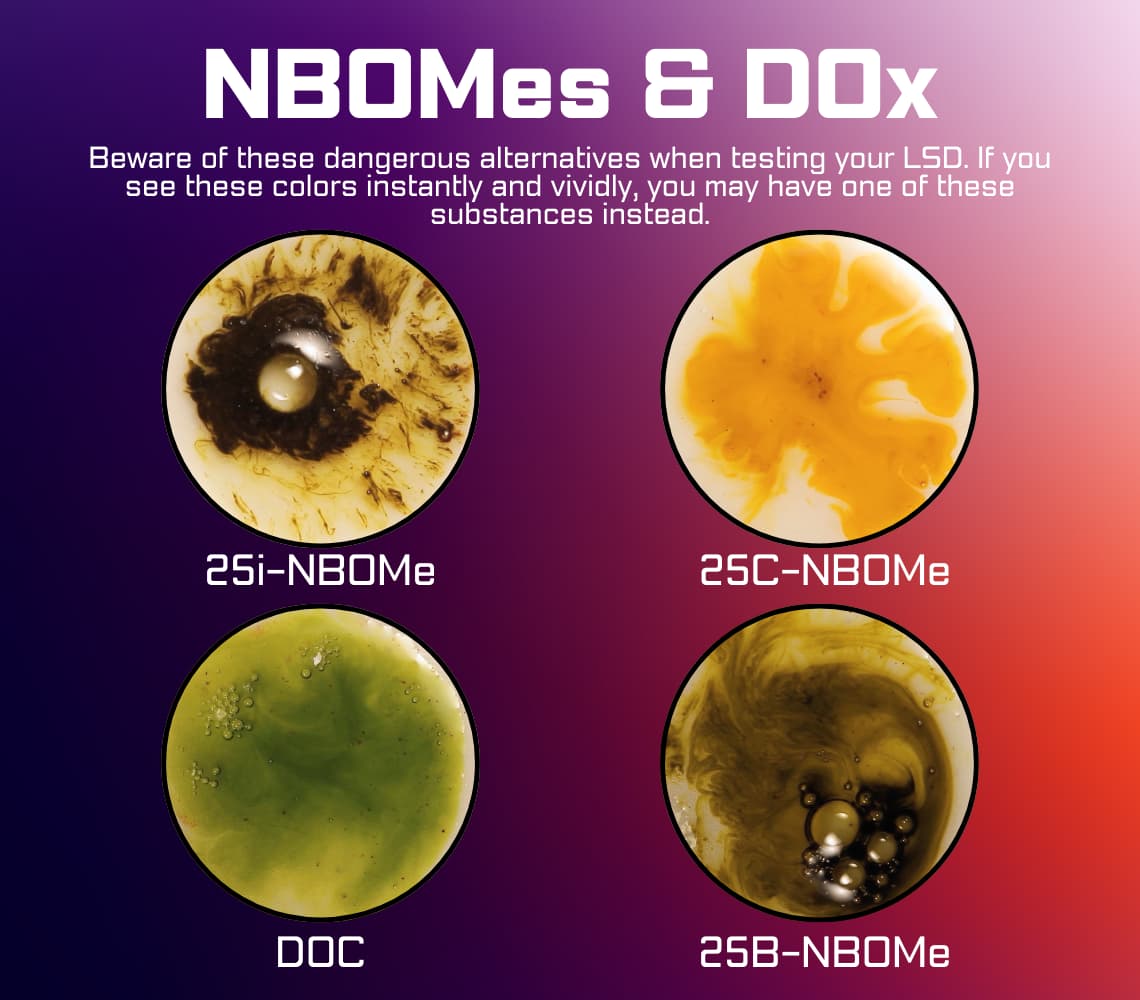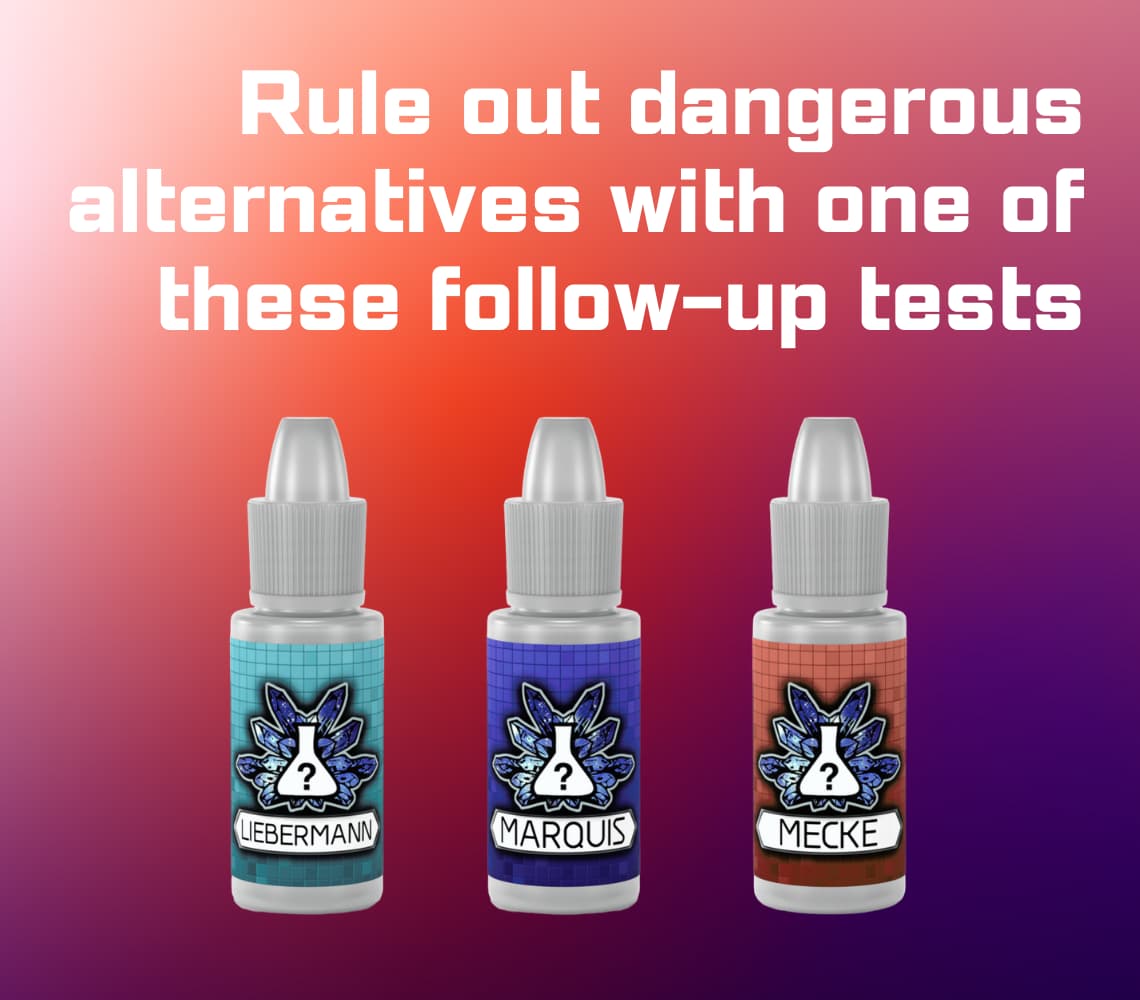We all know about LSD—the head-spinning, creativity-boosting, hallucinogenic whirlwind of a psychedelic staple, synthesized in 1938 by Albert Hofmann. This drug has inspired political movements, invoked groundbreaking artistic moments, and led to massive cultural shifts. But despite its popularity, there is a surprising amount of variation in something as simple as how it looks and the form it can come in—and what this means when testing or ingesting it.
All about Gel Tabs, Blotter, & Liquid LSD: What to Know Before You Drop
When we think of LSD, we typically think of blotters; little squares of perforated, absorbent paper that have been soaked in liquid LSD.
LSD can also be kept in its liquid form and consumed as a droplet, where it has been mixed with alcohol or another solvent to dose at around 100 ug a drop (typically, but can be much more per drop). Liquid LSD is also sometimes dropped on other consumable mediums, such as sugar cubes, mints, and gummies.
But what other forms of LSD are out there, and how do they need to be treated differently when planning to trip (or testing beforehand)?
What is an LSD Gel Tab?
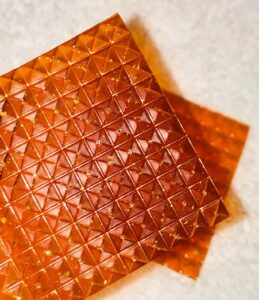
One of the most common forms of LSD are gel tabs, sometimes called windowpanes. A gel tab is a form of LSD or LSD analog infused into a small square of gelatin. Gel tabs are usually about the size of a blotter tab (~1/4 inch square), but often slightly thicker, shiny, or translucent. Gel tabs can have either a smooth, gummy texture, or a harder texture, similar to plastic. One benefit of gel tabs is that they typically have a longer shelf life, and are more stable in heat and humidity.
Are Gel Tabs Stronger than Other Types of LSD?
It is important to be aware that gel tabs have the potential to be more potent than blotter or liquid LSD per volume, simply because they can hold a higher concentration of LSD. Similarly, gel tabs will maintain their potency for longer periods of time, because the gelatin preserves the LSD better than a blotter or a liquid form, and helps avoid evaporation or degradation from light or air exposure.
Asking your source about the dosing, and starting with a lower amount is a good rule of thumb when taking gel tab LSD. However, the only way to be certain about the dosing is to test it yourself. Our lab can provide the microgram amount of LSD in a gel tab sample with our Complete Analysis (Purity + Identification). Read on for more testing options.
How to Test Gel Tabs, Blotters, and Liquid LSD
Testing Blotter LSD
For testing LSD in blotter form, you only need to use a tiny amount, a small corner, or about 1/10th of a blotter to test. We recommend the LSD Spot Kit Package, which includes our Ehrlich and Hofmann reagents, which will both positively identify LSD. We also recommend either Marquis, Mecke, or Liebermann as a follow up, to rule out dangerous psychedelic stimulants, such as NBOMes or DOx. You can find the LSD reaction videos on Vimeo, or on our app.
For a fuller screening, you can send a sample of your blotter into Transparency Testing for laboratory analysis. For blotter LSD, you can select our Basic Identification Analysis, Full Identification Analysis, or Complete Analysis (Identification + Purity) screenings.
Testing Gel Tabs
For testing gel tabs at home, the process is slightly different. Since LSD is typically concentrated in the center of the gel tab, start by cutting the tab down the middle, and take a tiny bit of the center to test. Again, we recommend using the LSD Spot Kit Package, which includes the Hofmann and Ehrlich reagents, along with either the Marquis, Mecke, or Liebermann reagent as a follow up.
Hofmann is one of the most important kits for LSD gel tabs—providing the most distinct reaction with this form, as opposed to Ehrlich, which can sometimes cause inconclusive results from the gelatin itself (and from Ehrlich's tendency to react to any indole, lysergamide, tryptamine, and even common food supplements).
A blueish reaction for Hofmann is especially important, and the confirmation test with Ehrlich should be purplish/pink. Gel tabs can take a while to show a reaction (up to 30 minutes—much longer than blotters or liquid LSD) so you can look for these colors within that time frame—even a bit of streaking in these colors is a positive reaction with gel tabs. Comparatively, the follow-up single reagent (Marquis, Mecke, or Liebermann) to rule out dangerous adulterants would be a vivid color change if NBOMes and DOx were detected.
Extracting the LSD from the Gelatin
Alternative to testing the gel tab itself, there are steps that can be followed to extract the LSD from the gelatin before testing. This avoids the potential for the gelatin to interfere with the reaction, but requires a few extra steps:
- Place a sample of the gel tab into a small amount of water.
- Add sodium hydroxide (NaOH) to dissolve the gelatin.
- Add ethyl acetate (the solvent) to this gel-water mixture.
- Separate off the solvent and drop it onto a ceramic testing platform.
- Without using heat, let the solvent evaporate until dry.
- Now, test with reagents. The reactions should now match typical LSD reactions.
Source: Erowid
Remember to handle any of these chemicals with caution, and wear protective equipment at all times, as described on our Safety Information page.
Lab Testing Gel Tabs
For a fuller screening, you can send a sample of your gel tab into Transparency Testing for laboratory analysis. For gel tabs, you must select our Full Identification Analysis, or our Complete Analysis (Identification + Purity)—gel tabs cannot be analyzed using our more basic options.
Testing Liquid LSD
For testing liquid LSD, it is important to note that the liquid (alcohol or other solvent) can affect the color results. To avoid this issue, we recommend dropping your liquid LSD onto a piece of white, untreated paper and testing it with reagents after the paper dries. Otherwise, you can put a few drops in a test tube or testing surface, let the liquid evaporate, and test the residue.
Like with other forms of LSD, we recommend the LSD Spot Kit Package for testing liquid LSD. This package includes our Ehrlich and Hofmann reagents, which will positively identify LSD, and rule out potential cutting agents. We also recommend either Marquis, Mecke, or Liebermann as a follow up, to rule out dangerous psychedelic stimulants, such as NBOMes or DOx.
Common Substances Sold As LSD
With LSD being such a popular substance, there are certain alternatives that are commonly missold as LSD, either for cost savings, availability, or potency. Some of those include the closely-related novel lysergamides, like 1P-LSD, 1cP-LSD, 1V-LSD or 1B-LSD (check the sections at the end of this article for more information on these substances). These drugs are not typically dangerous, and often have identical, or very similar effects to LSD.
However, cheap psychedelic stimulants from the phenethylamine class—like “NBOMes,” such as 25I-NBOMe, 25C-NBOMe, and 25B-NBOMe—are still a present danger for LSD misrepresentation. While not nearly as common as in the mid 2010s, NBOMes are still being sold as LSD, due to their inexpensive cost and extreme potency. Unlike the prodrugs and novel lysergamides mentioned above, NBOMes and other synthetic stimulants, such as DOC, are significantly more dangerous—and present a high risk of overdose, seizures, heart failure, and death at relatively low doses.
How Do I Test to Make Sure NBOMes or Other Dangerous Alternatives Aren’t Present?
While there are red flags, such as a bitter taste and mouth numbing effect that may indicate NBOMes are present, this is not a catch-all for detecting dangerous alternatives.
The only way to make sure these substances are not present is through at-home or laboratory testing. For at-home options, we recommend using either the Marquis, Mecke, or Liebermann reagent as a follow up test with our LSD Spot Kit Package. Any of these reagents will rule out NBOMes or DOx. Look out for an instant and vivid color change to rule out these substances, not a slow browning or gradual color change.
It is also important to note that there is research to suggest that if a sample contains LSD, it is extremely unlikely to contain any other adulterant alongside it. However, if the reagent results do not indicate LSD is present, we recommend using either Marquis, Mecke, or Liebermann for further clarity. If these tests instantly react with a vivid color change, that might suggest the presence of an NBOMe or DOx.
For learning more about 1P-LSD and 1cP-LSD, as well as testing to distinguish between those substances and LSD, read on!

